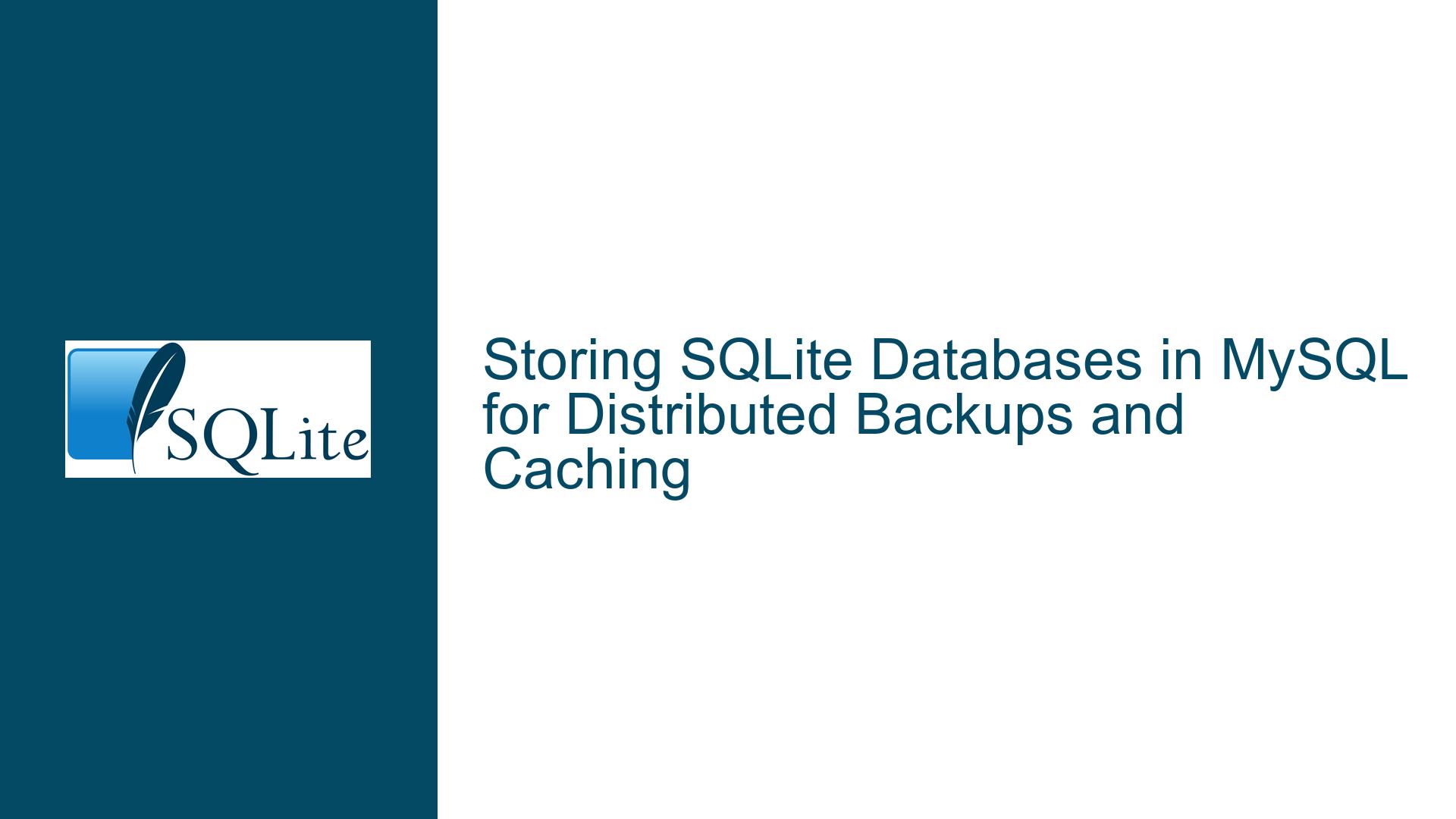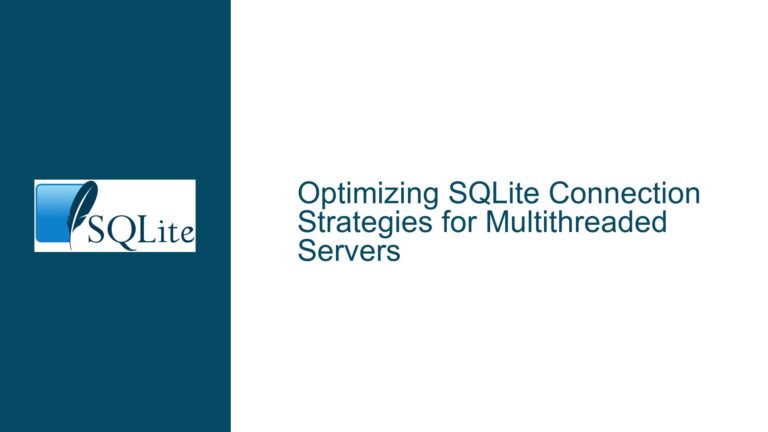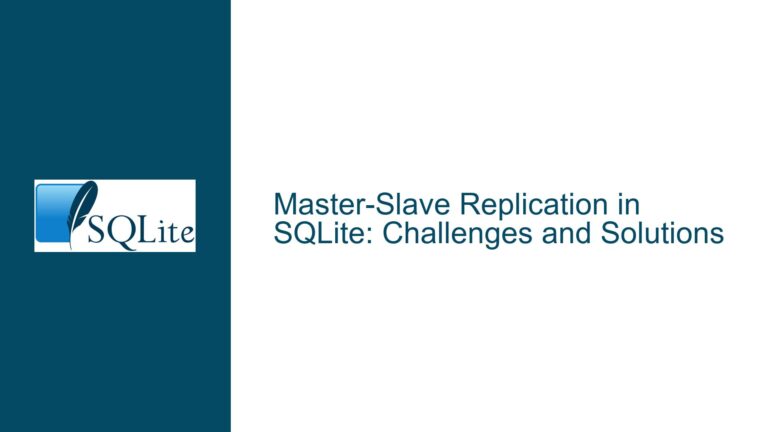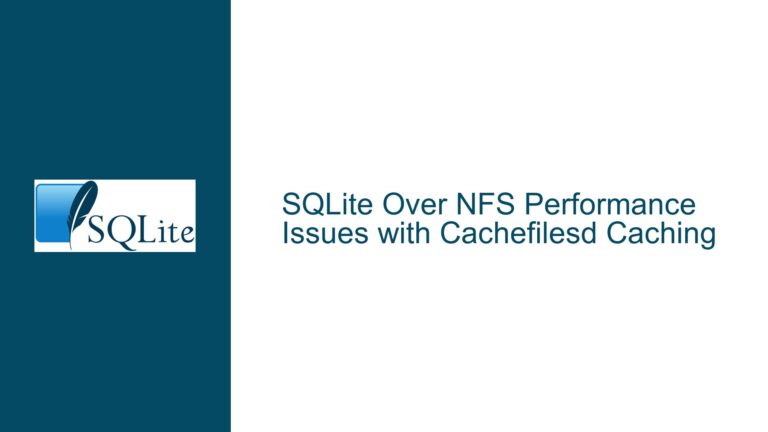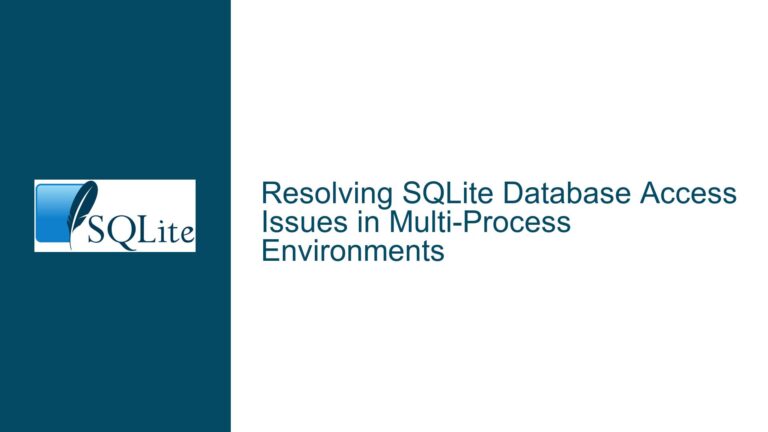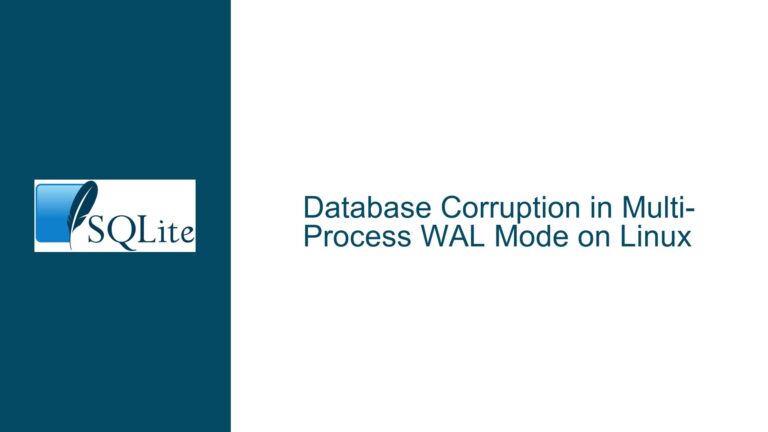Storing SQLite Databases in MySQL for Distributed Backups and Caching
Architectural Viability of SQLite-in-MySQL Hybrid Systems
The concept of embedding SQLite databases within a MySQL database to enable distributed backups and client-side caching raises unique technical challenges and opportunities. At its core, this approach involves treating SQLite database files (.db or .sqlite) as binary large objects (BLOBs) stored in MySQL tables. Clients would retrieve these BLOBs on demand, cache them locally, and potentially modify them before syncing changes back to the central MySQL repository. While theoretically feasible, this architecture intersects with critical limitations of both SQLite and MySQL, including file integrity requirements, concurrency control, and network efficiency. This guide dissects the technical landscape of this hybrid system, identifies failure modes, and provides actionable solutions for developers considering this approach.
SQLite File Management and MySQL BLOB Storage Dynamics
File Closure Integrity
SQLite databases exist as single files when cleanly closed, but transient states involve auxiliary files like write-ahead logs (WAL files with .sqlite-wal extensions) or shared memory files (.sqlite-shm). Storing an SQLite database in MySQL while it is open or improperly closed risks capturing an incomplete or corrupted snapshot. For instance, if a client uploads an SQLite file to MySQL while a transaction is pending in the WAL, the stored BLOB becomes unusable for future operations. This necessitates rigorous file closure protocols before storage.
BLOB Storage Overhead in MySQL
MySQL’s BLOB type supports storage of up to 4GB per object (using LONGBLOB), but frequent read/write operations on large BLOBs degrade performance. Storing hundreds of SQLite databases as BLOBs introduces fragmentation, increases query latency, and complicates indexing. Moreover, MySQL’s replication mechanisms (e.g., binlogs) are not optimized for BLOB-heavy workloads, leading to replication lag in distributed deployments.
Network-Bound Latency and Bandwidth
Clients downloading multi-gigabyte SQLite databases from MySQL face bandwidth saturation risks. Repeated full-database transfers negate the efficiency gains of caching, especially when only small subsets of data change between syncs. This creates a tension between data freshness and network resource consumption.
Concurrency Conflicts and Distributed State Management
Divergent Client Modifications
When multiple clients download the same SQLite database from MySQL, modify their local copies independently, and attempt to upload changes, reconciling these divergent states becomes intractable. SQLite lacks built-in conflict resolution mechanisms for such scenarios, unlike distributed databases that employ consensus algorithms (e.g., Raft in rqlite). Without a versioning system or timestamp-based lineage tracking, the MySQL-hosted BLOB becomes a source of data loss or silent overwrites.
Write Amplification in Hybrid Systems
Each client modification to a local SQLite database requires re-uploading the entire database file to MySQL, even if only a single row was altered. This write amplification strains both client uplink bandwidth and MySQL’s storage subsystem. Incremental delta updates are not natively supported in SQLite’s file-based model, necessitating custom diff/patch tooling.
Cache Coherency Challenges
Clients relying on cached SQLite databases must invalidate their local copies when the central MySQL-stored version changes. Implementing a cache coherency protocol (e.g., polling MySQL for last-modified timestamps) adds overhead and complicates client logic. Without such mechanisms, clients risk operating on stale data, leading to business logic errors.
Mitigation Strategies and Alternative Architectures
Enforcing Clean SQLite File Closure
Before storing an SQLite database in MySQL, ensure all connections to the file are closed using sqlite3_close_v2(), and verify the absence of WAL or SHM files. On POSIX systems, employ file locks or inotify to detect open handles. For programmatic assurance, use SQLite’s sqlite3_serialize() API to capture a database snapshot without closing connections. This function serializes the database into a byte stream, bypassing filesystem dependencies. Example workflow:
- Call
sqlite3_serialize()to obtain a BLOB representation of the live database. - Store the BLOB in MySQL.
- Use
sqlite3_deserialize()on clients to reconstruct the database.
Delta Encoding for Efficient Sync
Reduce network transfer volumes by computing binary diffs between SQLite database versions. Tools like bsdiff or xdelta3 generate patches representing changes between two database files. Clients upload patches to MySQL instead of full databases, and a central service applies patches to the canonical version. This requires maintaining a version history in MySQL, mapping each patch to a parent BLOB. For example:
- A
versionstable with columnsversion_id,parent_id,patch_blob, andtimestamp. - Clients fetch the latest patch chain and reconstruct the current database incrementally.
Adopting Distributed SQLite Variants
Replace the MySQL-backed hybrid system with purpose-built distributed SQLite solutions:
- BedrockDB: Provides multi-master replication with ACID compliance across nodes. Uses a Paxos-derived consensus protocol for conflict resolution. Suitable for high-availability deployments.
- rqlite: Exposes a HTTP API and uses Raft consensus. All writes go through the leader node, ensuring linearizability. Ideal for read-heavy workloads with infrequent writes.
- dqlite: A lightweight, C-based library integrating SQLite with Raft. Embedded directly into applications, avoiding external dependencies.
Hybrid Approach with Object Storage
Offload SQLite database storage from MySQL to an object storage service (e.g., Amazon S3, MinIO). Clients fetch databases via presigned URLs, and versioning is managed through object metadata. MySQL then serves as a catalog, tracking object identifiers, versions, and client access patterns. This decouples metadata management from bulk storage, leveraging S3’s scalability for large BLOBs while retaining MySQL’s transactional integrity for catalog operations.
Conflict-Free Replicated Data Types (CRDTs)
For applications where eventual consistency is acceptable, structure SQLite tables using CRDTs. For example, use additive counters for numerical fields or last-writer-wins registers for string columns. This requires schema design tailored to merge semantics, diverging from standard relational modeling. Clients sync CRDT-compliant SQLite databases through a middleware layer that resolves conflicts before committing to MySQL.
Client-Side Caching Policies
Implement TTL (time-to-live) policies and cache validation headers. When a client fetches an SQLite database from MySQL, include a Last-Modified timestamp or ETag in the response. Subsequent requests use If-Modified-Since headers to avoid redundant transfers. For local cache management, use SQLite’s SQLITE_CONFIG_PAGECACHE to allocate memory buffers, reducing disk I/O during frequent read operations.
Conclusion
Storing SQLite databases within MySQL as BLOBs introduces a complex interplay of file integrity, concurrency, and performance considerations. While feasible for small-scale, read-heavy workloads, the approach falters under write-intensive scenarios or large database sizes. Developers must rigorously enforce file closure protocols, adopt delta encoding for efficient synchronization, and consider alternative architectures like distributed SQLite variants or object storage integration. By aligning system requirements with the strengths of each technology—SQLite’s embedded simplicity, MySQL’s transactional cataloging, and distributed systems’ consensus protocols—this hybrid model can evolve into a robust solution for specific use cases, such as offline-first applications or decentralized backup systems.
